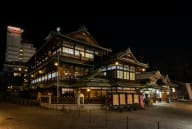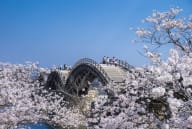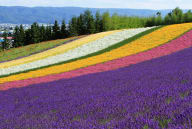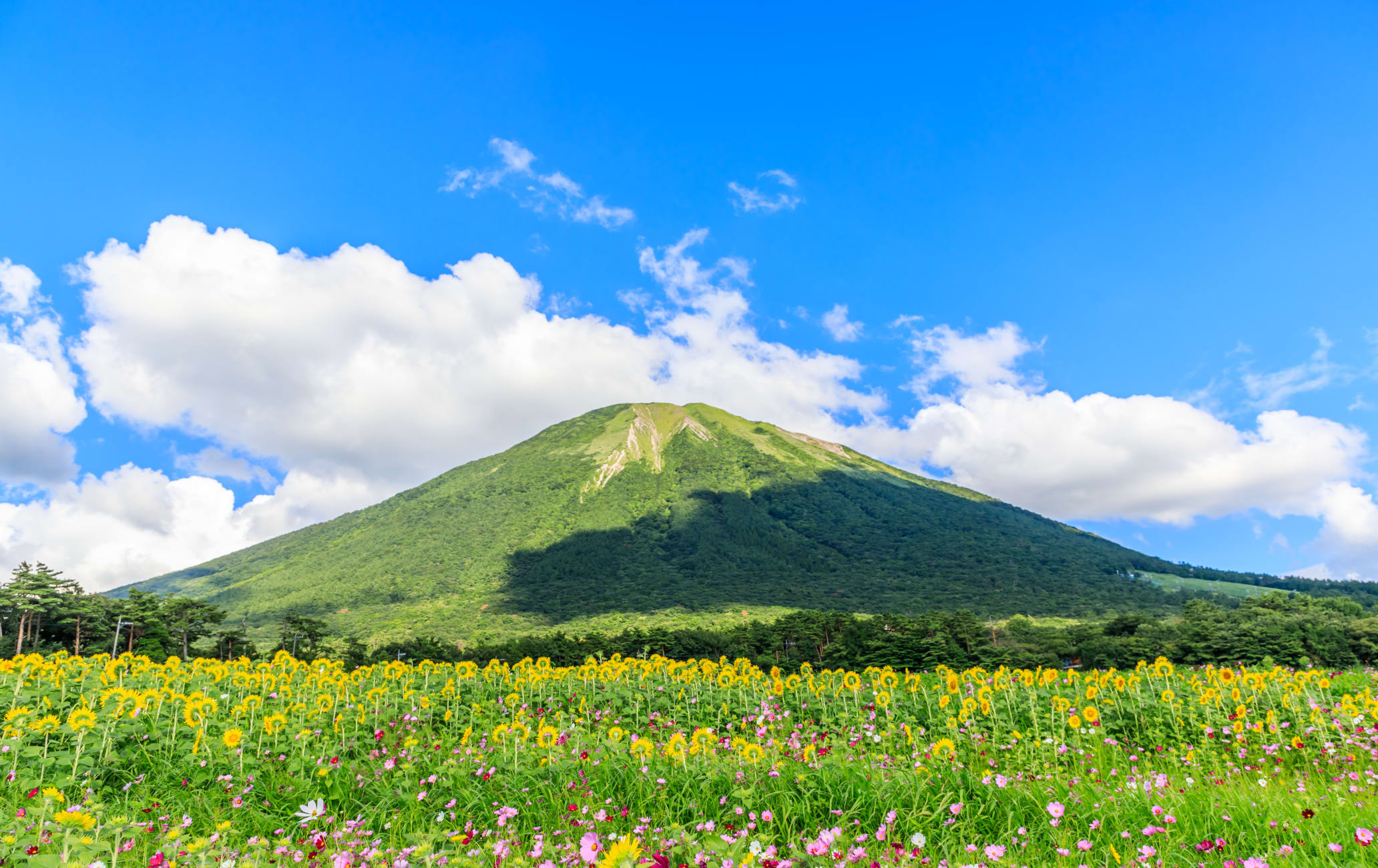Un paradis montagneux pour les mordus de sport de plein air
Bien connu des randonneurs et destination de ski prisée, le mont Daisen est considéré comme l'un des lieux les plus impressionnants du Japon occidental. La forme de cette montagne ainsi que les forêts de hêtres vierges qui l'entourent font concurrence au mont Fuji.
À ne pas manquer
- Des chemins de randonnée époustouflants
- L'une des stations de ski du Japon occidental les plus populaires
Comment s'y rendre
Le mont Daisen est accessible en bus depuis la gare de Yonago.
Des bus locaux circulent entre la gare de Yonago et le mont Daisen et passent environ cinq fois par jour. Un bus circulaire effectue le trajet depuis la gare de Yonago jusqu'à l'endroit le plus touristique du mont Daisen durant la haute saison, ainsi que les week-ends et pendant les vacances.
Anecdotes
La montagne s'élève à 1729 mètres d'altitude
Son nom signifie « grande montagne » et elle serait la demeure du Dieu du feu.
Un mini mont Fuji
Une enquête, menée par le groupe audiovisuel public NHK, a classé le mont Daisen à la troisième place des plus grands sommets du Japon, juste derrière le mont Fuji, le pic le plus haut du pays, et le mont Yarigatake, dans les Alpes japonaises .
Bien que l'importance culturelle et iconique du mont Fuji ne puisse en aucun cas être sous-estimée, le mont Daisen a été loué comme étant la plus haute montagne de la région de Chugoku et comme symbole spirituel.
Avec bien moins de visiteurs que le mont Fuji, des paysages aussi grandioses et une histoire aussi passionnante, l'ascension du mont Daisen représente pour beaucoup une expérience personnelle enrichissante et gratifiante.

Des chemins de randonnée tout simplement fabuleux
Un enchevêtrement de chemins de randonnée aux distances et difficultés variées se dessine sur le mont Daisen. Des cartes basiques et des conseils de randonnée sont fournis au Centre d'information de Daisen pour les parcours faciles et le plus souvent empruntés. Il est conseillé de faire appel à un guide de la région si vous souhaitez vous aventurer sur les chemins plus risqués et éloignés.
Des sommets étourdissants
Son plus haut sommet, le Kengamine, à 1729 mètres d'altitude, est fragile et sur le point de s'effondrer depuis le tremblement de terre qui frappa la préfecture de Tottori en 2000. L'accès y est depuis lors strictement interdit.
Toutefois, il est encore possible d'accéder au deuxième plus haut sommet, le mont Misen, dont les 1709 mètres d'altitude dévoilent les paysages à couper le souffle de la mer du Japon et de la baie de Miho d'un côté, et les cimes de la chaîne de montagnes de Chugoku de l'autre.
Se prélasser dans ce cadre enchanteur
Le parcours de randonnée de Natsuyama est un choix judicieux pour les randonneurs amateurs, bien que parfois très fréquenté. Il vous mènera au travers de forêts de hêtres et de parcelles d'ifs jusqu'à la cime du mont Misen.
En été, de magnifiques fleurs sauvages égayent votre chemin. L'automne apporte de jolis feuillages aux couleurs rouge et orange.
Lors de la descente, vous pouvez emprunter la boucle un peu plus longue afin de découvrir un nouveau paysage.
Cette route vous mènera dans une plaine traversée par une rivière rocailleuse, dans les bois du sanctuaire d'Ogamiyama-jinja et plus bas sur une route ancestrale en pavés qui conduit au temple Daisenji, fondé en 718.
Cette excursion aller-retour dure environ trois à cinq heures. Il est toutefois préférable de prévoir plus de temps si vous souhaitez emprunter le chemin de retour le plus long.
D'autres options de randonnée
D'autres sentiers, tels que l'Utopia, légèrement plus difficile mais moins fréquenté, ouvrent la voie jusqu'à un refuge, l'Utopia Hut. Prévoyez six heures d'excursion aller-retour.
Les célèbres randonnées aux chutes Daisendaki vous mèneront au travers de forêts vierges jusqu'à une impressionnante cascade sur deux niveaux.


Sports d'hiver
Le mont Daisen est l'une des meilleures stations de ski du Japon occidental. Elle est très appréciée autant par les habitants de la région que par ceux des villes voisines.
Des vues imprenables, plusieurs kilomètres de pistes parfaitement entretenues et de la neige de qualité en quantité, c'est exactement ce qu'a à vous offrir le mont Daisen, un véritable paradis hivernal.
Au Daisen White Resort, il y en a pour tous les goûts : des pistes noires aux pistes pour débutants.
Des randonnées en raquettes sont organisées dans les forêts vierges et le long de crêtes. Plusieurs agences proposent des forfaits. Vous trouverez de plus amples informations à ce sujet au centre d'information.
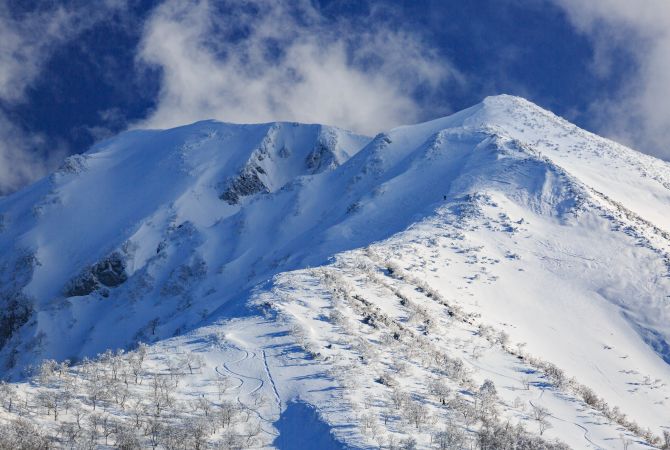

Un isolement sacré
Le mont Daisen, qui signifie « grande montagne » est vénéré depuis des millénaires.
Il était autrefois connu sous le nom d'Ogamiyama, qui signifie « montagne du grand dieu ». Beaucoup considéraient ce dieu comme étant le Kagutsuchi-no-mikoto, ou Dieu du feu.
La montagne sacrée était un site d'entraînement parfait pour les ascètes montagnards et son accès était strictement interdit jusqu'à la fin du XIXe siècle. Cet accès limité a permis aux forêts de hêtres de se développer librement.
















